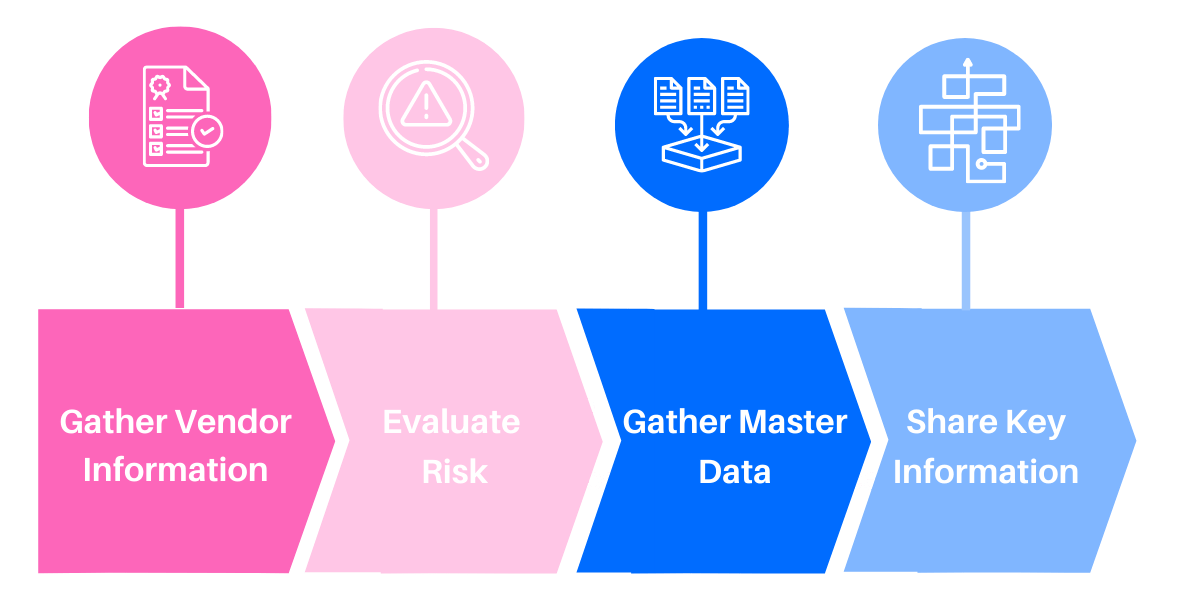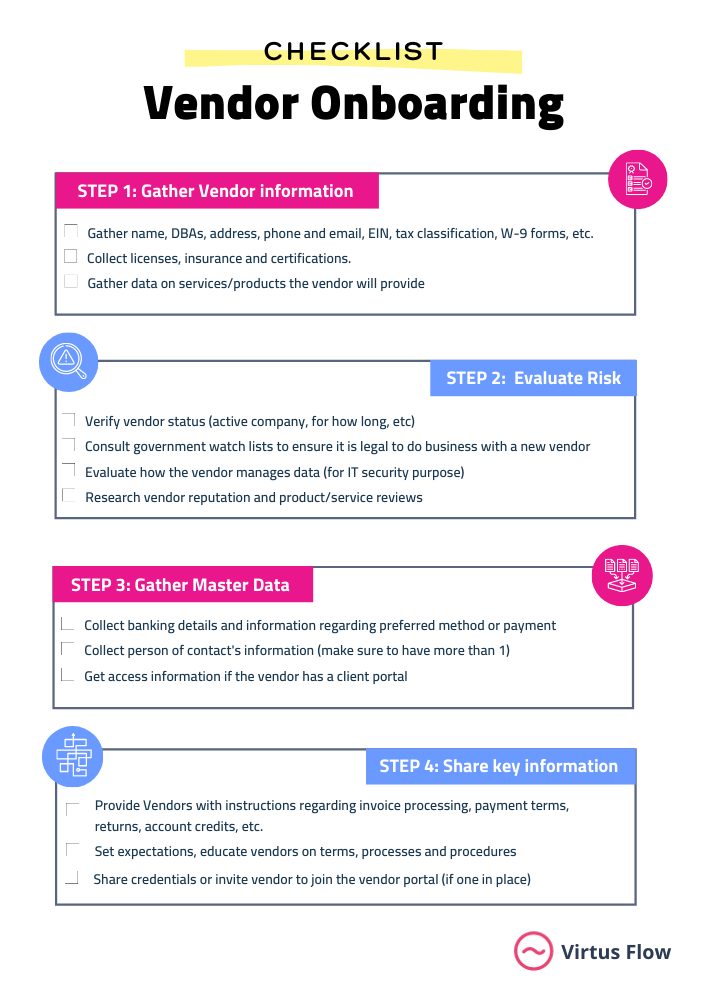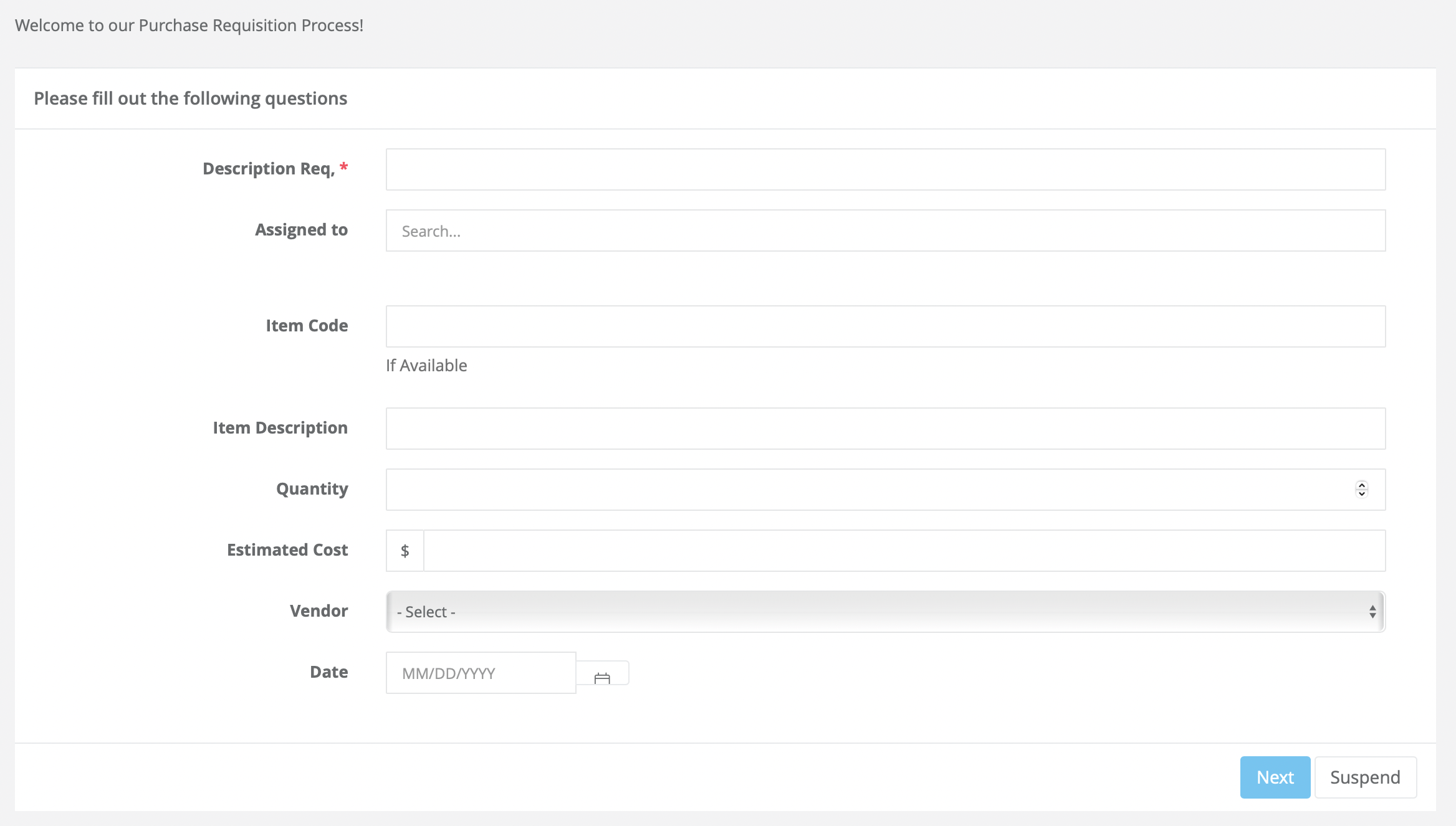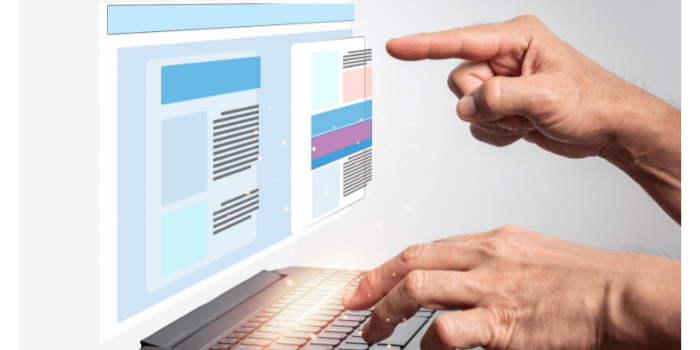If you are here you probably know that vendor relationships can be very time consuming and cumbersome. Especially when you work with a large number of them.
The Vendor Onboarding process in particular can take weeks, even months if not effectively managed. As it involves a multitude of departments, each of which needs to do the prospective supplier evaluation and decide whether it will be approved or rejected.
Thanks to supplier onboarding software and other onboarding solutions, these operations can be easily streamlined. These solutions help facilitate the onboarding process, saving time keeping everyone align and work synchronized. In this article we discuss how!
Let’s quickly give some important clarifications.
What is Vendor Onboarding?
Vendor onboarding is the process of collecting important data and documents required in order to qualify, approve, and contract with new vendors, purchase goods and services, and make timely payments.
Why is the Vendor Onboarding process important?
Long story short:
- Because not doing proper evaluation and approval process of suppliers can put your business at huge risk.
- Because having an inefficient process in place is costing companies way more than it should. Including long time to initiate projects and frustration among involved parts.
The vendor onboarding process not only helps you strengthen supplier relationships, but it also helps protect your company by:
- Improving your vendor due diligence and risk management
Which includes evaluating quality, cost, technological capabilities, financial status, operational, reputation and data security risk.
- Ensuring compliance with legal requirements and expectations

How to streamline your Supplier Onboarding process?
Did you know that, on average, vendor onboarding can take as long as six months for larger companies?
» This happens because due diligence processes are often cumbersome and lack transparency, making it difficult for all parties involved to stay on track and keep effective communication.
Some of the steps that often delay vendor onboarding include:
-
-
- Background checks
- Risk assessments
- Legal approval process
- Corporate social responsibility policies
- Reliance on manual tasks
- Inability to keep track tasks, documents and communications
-
Optimizing your vendor onboarding process – by streamlining workflows and identifying areas that could be automated – will speed it up and simplify the overall process for all involved parts.
How, then, can you identify whether your vendor onboarding needs to be optimized?
Here are a few questions you can ask yourself.
-
-
-
-
- Is my supplier onboarding process taking longer than it should?
- Are we gathering the right supplier data?
- Have we identified all the steps needed for the process?
- Are we duplicating tasks?
- Once the onboarding process is over, is supplier management easy?
-
-
-
Explore how to automate your Vendor Onboarding in minutes!
Vendor Onboarding Checklist
The next thing is to make sure you’re following all the necessary steps that will make supplier onboarding successful.
To help you get started, take a look at the four steps list to guide you in designing the ultimate vendor onboarding process.

Step 1: Gather Vendor Information
During this step you’ll want to collect all documents validating the vendor competencies to provide the service or products in question.
Information concerning characteristics and quality of products, certifications, documents to prove legal status, tax ID, etc.
Documenting every conversation and its outcome will help prevent miscommunication and misalignments down the road.
Step 2: Evaluate Risk
Once you have all relevant information it is time to assess potential risk and prevent mishaps in your supply chain.
This is when you’ll run a background check, confirm compliance, and ensure the vendor you’re considering aligns with your company regulations.
If you follow quality certification standards such as ISO 27000, ISO 9000 or SOC 2 you will need to make sure your vendor is compliant with specific requirements.
By doing proper research you can identify and mitigate risks that could potentially affect your operations in the future.
Step 3: Gather Master Data
The third step is when you’ll want to gather vendor details that will help you get the transaction started. This could mean banking details, accounts payable contact information, roles and everything else that might be relevant.
It’s important that when you gather all this data, you keep it all in one place. Having one source of truth will make the process much easier for you and all team members involved.
Step 4: Share Key Information
When you share all necessary information early on, vendor management becomes much easier in the future.
This is why it’s important to share all vendor details with the accounts department, the purchasing department, inventory control, and any other stakeholders that could find this information useful throughout the vendor management process. Remember to share relevant data with your supplier as well.
If the management software platform you’re using offers a supplier portal, sharing information will be much easier.

Vendor Onboarding Forms: What are they and how do they contribute to a slimmer onboarding?
Dynamic forms, often referred to as smart or interactive forms, are forms that change in real time depending on the information entered by the user.

When it comes to vendor onboarding, dynamic forms make your vendor’s work easier by displaying only necessary fields and guiding the user in the process. Dynamic form builders let you add rules and conditions to design your process and establish the logic that apply to your workflows.
For example, depending on the type of supplier that is filling the form, you can automatically ask for documents specific to the nature of the product or service they provide.
Dynamic forms can be used throughout the entire vendor management process. You can use them to automate purchase orders, new purchase requests, new vendor requests, etc.
Onboard vendors with dynamic forms today!!
How to create your Vendor Onboarding form?
The role of Vendor Onboarding Software
Now that you’ve looked at your current process, you may have identified a few areas for improvement … and that’s great! Knowing what needs to be streamlined is the first step in adjusting your operations. This is when vendor onboarding software comes in.
Vendor onboarding platform helps you create automated, consistent workflows that allow you to streamline processes and access all the information you need in one place. By:
-
-
- Reducing redundancies and improving interdepartmental transparency
- Tracking data and workflows
- Automating basic tasks
- Reducing time to approve and activate new suppliers
- Reducing human error and redundancies
-
5 Vendor Onboarding Software to keep in mind
Virtus Flow: It’s a no code workflow automation solution that helps users automate not only the full vendor management process but also any other business process without the need for coding or developers.
Features include:
-
-
- Dynamic Forms
- Workflow Automation
- Document Automation and management
- Supplier Portal
- eSignature through DocuSign integration
-
Supplier getaway: This solution helps you collect the data and documents you need from new vendors and create custom invites and workflows.
Venminder: This solution empowers you to create a workflow to evaluate a vendor’s business and regulatory impact before you enter an agreement.
Hicx: This platform enhances the supplier experience by reducing costs, offering dynamic forms, and integrations for maximum efficiency and control.
Aravo: It allows you to deliver a consistent, automated process complete with a fully accessible audit trail. All your vendor and supplier information and documentation is in one place.




